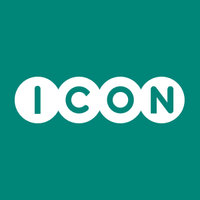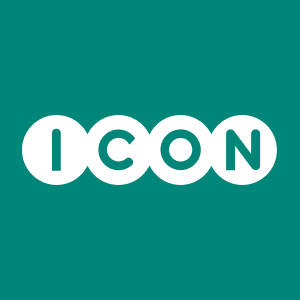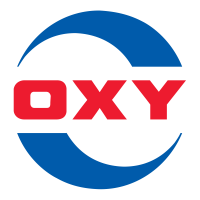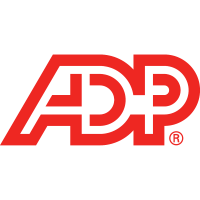
ICON PLC
NASDAQ:ICLR


| US |

|
Fubotv Inc
NYSE:FUBO
|
Media
|
| US |

|
Bank of America Corp
NYSE:BAC
|
Banking
|
| US |

|
Palantir Technologies Inc
NYSE:PLTR
|
Technology
|
| US |
C
|
C3.ai Inc
NYSE:AI
|
Technology
|
| US |

|
Uber Technologies Inc
NYSE:UBER
|
Road & Rail
|
| CN |

|
NIO Inc
NYSE:NIO
|
Automobiles
|
| US |

|
Fluor Corp
NYSE:FLR
|
Construction
|
| US |

|
Jacobs Engineering Group Inc
NYSE:J
|
Professional Services
|
| US |

|
TopBuild Corp
NYSE:BLD
|
Consumer products
|
| US |

|
Abbott Laboratories
NYSE:ABT
|
Health Care
|
| US |

|
Chevron Corp
NYSE:CVX
|
Energy
|
| US |

|
Occidental Petroleum Corp
NYSE:OXY
|
Energy
|
| US |

|
Matrix Service Co
NASDAQ:MTRX
|
Construction
|
| US |

|
Automatic Data Processing Inc
NASDAQ:ADP
|
Technology
|
| US |

|
Qualcomm Inc
NASDAQ:QCOM
|
Semiconductors
|
| US |

|
Ambarella Inc
NASDAQ:AMBA
|
Semiconductors
|
Utilize notes to systematically review your investment decisions. By reflecting on past outcomes, you can discern effective strategies and identify those that underperformed. This continuous feedback loop enables you to adapt and refine your approach, optimizing for future success.
Each note serves as a learning point, offering insights into your decision-making processes. Over time, you'll accumulate a personalized database of knowledge, enhancing your ability to make informed decisions quickly and effectively.
With a comprehensive record of your investment history at your fingertips, you can compare current opportunities against past experiences. This not only bolsters your confidence but also ensures that each decision is grounded in a well-documented rationale.
Do you really want to delete this note?
This action cannot be undone.

| 52 Week Range |
187.22
346.2
|
| Price Target |
|
We'll email you a reminder when the closing price reaches USD.
Choose the stock you wish to monitor with a price alert.

|
Fubotv Inc
NYSE:FUBO
|
US |

|
Bank of America Corp
NYSE:BAC
|
US |

|
Palantir Technologies Inc
NYSE:PLTR
|
US |
|
C
|
C3.ai Inc
NYSE:AI
|
US |

|
Uber Technologies Inc
NYSE:UBER
|
US |

|
NIO Inc
NYSE:NIO
|
CN |

|
Fluor Corp
NYSE:FLR
|
US |

|
Jacobs Engineering Group Inc
NYSE:J
|
US |

|
TopBuild Corp
NYSE:BLD
|
US |

|
Abbott Laboratories
NYSE:ABT
|
US |

|
Chevron Corp
NYSE:CVX
|
US |

|
Occidental Petroleum Corp
NYSE:OXY
|
US |

|
Matrix Service Co
NASDAQ:MTRX
|
US |

|
Automatic Data Processing Inc
NASDAQ:ADP
|
US |

|
Qualcomm Inc
NASDAQ:QCOM
|
US |

|
Ambarella Inc
NASDAQ:AMBA
|
US |
This alert will be permanently deleted.
 ICON PLC
ICON PLC
Earnings Call Analysis
 Q2-2024 Analysis
ICON PLC
Q2-2024 Analysis
ICON PLC
In the second quarter, ICON achieved significant financial milestones with gross business wins of $3.07 billion, a year-over-year increase of 7.4%. Despite $493 million worth of cancellations, the net awards stood at an impressive $2.58 billion, leading to a net book-to-bill ratio of 1.22x. The company's backlog also grew to a record $23.8 billion, representing an increase of 2% from the first quarter and nearly 10% year-over-year. This solid performance underscores ICON's ability to secure new business across various segments.
ICON reported a 4.9% year-over-year increase in revenue, reaching $2.120 billion, which translates to a 5.3% increase on a constant currency basis. The gross margin for the quarter was 29.9%, up 30 basis points compared to the same period last year. Notably, the company achieved an adjusted EBITDA of $450.4 million, or 21.2% of revenue, marking an 8.7% increase year-on-year. The adjusted EBITDA margin expanded by 70 basis points, showcasing strong operational efficiency and cost management.
While the overall business environment remained robust, ICON faced delays in next-generation COVID vaccine trials due to regulatory guidance issues and product-related delays. These trials are now expected to enroll the majority of patients in 2025. Consequently, the company's COVID-related revenue for 2024 is anticipated to be around 1.5% to 2% of total revenue, representing a headwind of approximately 200 basis points year-over-year. Despite these challenges, ICON remains confident in its core business, which excluding COVID, has grown by 8% year-to-date.
ICON has updated its full-year 2024 guidance to account for the delayed COVID projects and foreign exchange headwinds due to a strengthening U.S. dollar. The company now expects revenue to be in the range of $8.45 billion to $8.55 billion, reflecting growth of 4.1% to 5.3% over 2023. Additionally, the full-year adjusted earnings per share guidance has been raised to $15 to $15.20, an increase of 17.3% to 18.8% year-over-year. This revision is supported by strong margin delivery and effective cost management.
Following a successful $2 billion bond offering, ICON has refinanced its variable debt, resulting in approximately 72% of its debt now being subject to fixed rates. This move is expected to reduce interest expenses by around $110 million over 2023, with total interest expenses projected to be between $200 million and $210 million for 2024. Continuing its strategic focus, ICON remains open to mergers and acquisitions to enhance its clinical offerings, while also having authorization for a share repurchase program of up to $500 million.
ICON's customer base has diversified, with the top 5 customers representing 24.7% of revenue in the second quarter. The company recorded adjusted net income attributable to the group at $312.6 million, with an adjusted earnings per share of $3.75, marking a 20.6% increase year-over-year. U.S. GAAP net income for the quarter was $146.9 million, or $1.76 per diluted share, up from $1.40 per share in the prior year.
The competitive environment, particularly in securing strategic partnerships, remains challenging. However, ICON's ability to deliver strong execution and cost efficiency enables it to maintain robust margins. Even with some competitors adopting aggressive pricing strategies, ICON's focus on high-quality delivery and strategic customer relations helps it stay competitive.






 You don't have any saved screeners yet
You don't have any saved screeners yet

Good day, and thank you for standing by. Welcome to the ICON Q2 2024 Earnings Results Conference Call. [Operator Instructions] Please be advised that today's conference is being recorded.
I would now like to hand the conference over to your speaker today, Kate Haven. Please go ahead.
Good day, and thank you for joining us on this call covering the quarter ended June 30, 2024. Also on the call today, we have our CEO, Dr. Steve Cutler; our CFO, Brendan Brennan; and Senior Vice President of Corporate and Commercial Finance, Emer Lyons. I would like to note that this call is webcast and that there are slides available to download on our website to accompany today's call.
Certain statements in today's call will be forward-looking statements. These statements are based on management's current expectations and information currently available, including current economic and industry conditions. Actual results may differ materially from those stated or implied by forward-looking statements due to risks and uncertainties associated with the company's business, and listeners are cautioned that forward-looking statements are not guarantees of future performance. Forward-looking statements are only as of the date they are made, and we do not undertake any obligation to update publicly any forward-looking statements, either as a result of new information, future events or otherwise. More information about the risks and uncertainties relating to these forward-looking statements may be found in SEC reports filed by the company, including the Form 20-F filed on February 23, 2024.
This presentation includes selected non-GAAP financial measures, which Steve and Brendan will be referencing in their prepared remarks. For a presentation of the most directly comparable GAAP financial measures, please refer to the Press Release section titled Condensed Consolidated Statements of Operations. While non-GAAP financial measures are not superior to or a substitute for the comparable GAAP measures, we believe certain non-GAAP information is more useful to investors for historical comparison purposes. Included in the press release and the earnings slides, you will note a reconciliation of non-GAAP measures: adjusted EBITDA, adjusted net income and adjusted diluted earnings per share exclude stock compensation expense, restructuring costs, foreign currency gains and losses, amortization and transaction-related and integration-related costs and their respective tax benefits. [Operator Instructions]
I would now like to hand over the call to our CEO, Dr. Steve Cutler.
Thank you, Kate, and good day, everyone.
ICON's results in quarter 2 continued our positive year-to-date trajectory of growth marked by solid financial performance and further success in securing new business across our segments. Net business wins and backlog grew by 7% and 10%, respectively, year-over-year, as our leading scaled offering continues to resonate with our customers, uniquely positioning ICON to meet increasing demand for innovative and flexible solutions in clinical development.
We remain encouraged by the leading indicators in our market that support a solid demand environment, including continued growth in RFP flow and the overall consistent level of opportunities we are seeing across our customer segments. While biotech funding levels attenuated slightly in quarter 2 from a robust start in quarter 1, we see this market continuing to stabilize and have seen a modest uptick in RFPs on a trailing 12-month and sequential basis within this segment. Importantly, customer sentiment appears to be improving, and we remain optimistic around the contribution to midterm growth this important customer segment represents.
In the large pharma segment, we see continued opportunity to win and expand our support of the many customers seeking novel solutions. While macro challenges and budget uncertainties remain a factor at the forefront in their overall spending decisions, we have seen continued prioritization around the development of late-stage clinical pipeline assets to advance drugs to market. We believe this provides a certain degree of stabilization to the demand patterns in this area of the market that have largely been steady through more volatile macroeconomic periods in recent years.
Our offering in large pharma is particularly well placed to serve customers seeking flexible, blended solutions, encompassing both full service and functional elements of delivery with our proven agility and scalability in both service areas.
One of the key strategic initiatives we laid out at our Investor Day in May was extending our leadership in the large pharma market through our blended solutions offering and our differentiated ability to customize a model for customers. This increasingly important approach was critical to our success in securing another new strategic partnership with a rapidly growing top 30 pharma company for full-service solutions in quarter 2.
We were selected for this partnership due to our ability to partner with this customer in creating a tailored operational solution that was optimized to fit their evolving needs. Our deep understanding of various outsourcing models and the ability to pivot between them was a key differentiating point for ICON as well as our portfolio of integrated peri-clinical services that will create value in areas such as site and patient solutions and laboratory services.
This reinforces our recent success in building partnerships outside of our top-tier customers, creating a well-diversified and balanced portfolio that is not overly concentrated to a particular customer or therapeutic area. Specifically, in the first half of this year, we were able to grow revenue outside our top 5 customers by over 8%, illustrating the success we are having in executing our portfolio and developing our top tier customers of the future.
As we continue to grow and scale our company, we remain focused on leveraging the unique blend of experience and capability we have in not only winning but executing and expanding large-scale strategic partnerships that create strong value for both our customers and ICON.
While our perspective on this year's demand environment has remained consistent, we did receive an update late in the quarter pertaining specifically to next-generation COVID vaccine trials that will cause an impact to our full year revenue in 2024 due to the delayed start of these studies. There were two primary but separate issues that affected the start of these trials. One was a delay in sponsors receiving regulatory guidance that was required before commencing trial enrollment pertaining to new variant specifications. And the second was investigational product-related issues that caused a delay in enrollment.
We are working closely with our development partners to ensure efficient and timely execution of these high-priority studies that continue to be of critical importance to our customers and the safety and health of our communities. To be clear, these studies have not been canceled and our expectation is that these trials will enroll the majority of patients in 2025, with start-up-related activities having already commenced in some instances.
With these anticipated changes, we now expect our COVID-related revenue to be approximately 1.5% to 2% of total revenue for the full year in 2024, representing a year-over-year headwind of approximately 200 basis points to total revenue.
While we're disappointed by these unanticipated one-off project delays, these do happen in our industry, and they are limited to one specific area within our business. We remain confident in the strength and delivery of our underlying service offering as well as the benefits of a diversified mix of customers and therapeutic areas that constitute our entire portfolio.
Our business performance, excluding COVID, has been very solid, with revenue growing 8% year-to-date over the first half of 2023 and is helping to offset some of the negative headwinds we are now expecting from both foreign exchange and the COVID-specific study delays.
To that end, given the excellent margin delivery year-to-date through strong project execution and cost control across the business, as well as further leverage of our global business services model, we are increasing our full year adjusted EBITDA margin expectation to 21.7%, at the midpoint of our range. an increase of 80 basis points on a year-over-year basis. This outperformance, coupled with the expected savings on full year interest expense, is supporting the increase of our full year adjusted earnings per share guidance, which we now expect to be in the range of $15 to $15.20, an increase of 17.3% to 18.8% over the full year 2023.
With the consistent trends in our broader demand environment, our expectation on book-to-bill remain in the range of 1.2 to 1.3x on a quarterly basis, maintaining our previous target range.
Turning to financial performance in quarter 2. Net bookings grew 7% on a year-over-year basis, resulting in a book-to-bill of 1.2x in the quarter and sustaining our trailing 12-month book-to-bill ratio of 1.24x. We again saw a strong performance in our large pharma business, particularly in full service solutions as well as for operational delivery services in data sciences, which notably secured a new sole provider award in the quarter.
Total revenue increased 5.3% on a constant currency year-over-year basis in the quarter. Gross margin of 29.9% increased 30 basis points over quarter 2 2023, and total SG&A expense decreased 40 basis points on a year-over-year basis to 8.7% of total revenue, driving another quarter of strong adjusted EBITDA growth of 9% over quarter 2 2023. This resulted in an adjusted EBITDA margin of 21.2% in the quarter, up 70 basis points year-on-year.
With strong margin delivery through our P&L, in addition to the benefits of our debt refinancing, we saw excellent year-over-year growth in adjusted earnings per share of approximately 21%.
Following the successful repricing of our existing Term loan B facility earlier this year, we continued our strategy of further refinancing our variable debt in quarter 2. We completed our inaugural SEC bond offering totaling $2 billion in early May, which was met with very strong investor interest and initial order book of circa $15 billion. The proceeds of this offering were allocated to the repayment of our fixed Term Loan B debt, resulting in a current capital structure, which has approximately 72% of our debt subject to fixed rates.
As we noted at our Investor Day in May, this now provides us visibility to a reduction of approximately $110 million in interest expense over 2023, resulting in expected total full year interest expense in the range of $200 million to $210 million for 2024. Importantly, this was a great milestone for our company in completing our first investment-grade bond offering and providing increased balance sheet flexibility as we look to continue to optimally deploy capital on a go-forward basis.
As we have previously stated, we remain focused on M&A as the priority use of capital in the near term with a focus on strategic assets that continue to differentiate our clinical offering and drive value for our customers. However, as communicated previously, we have authorization from our Board of Directors for a share repurchase program of up to $500 million to be deployed opportunistically on an ongoing basis, if the appropriate assets cannot be secured at the right price.
We are updating our full year 2024 guidance range to account for the delayed COVID-related projects as well as foreign exchange headwinds due to the strengthening U.S. dollar since our quarter 1 report. We now expect revenue to be in the range of $8.45 billion to $8.55 billion, an increase of 4.1% to 5.3% over full year 2023.
As I noted earlier, we are increasing our full year adjusted earnings per share guidance to a range of $15 to $15.20, an increase of 17.3% to 18.8% on a year-over-year basis, reflecting our strong margin delivery and continued cost management.
Before I close out my prepared remarks, I want to provide a brief update on our CFO transition. We continue to make good progress on our search for a new CFO, and we now have a small number of very strong candidates remaining in the process. We expect to make a more detailed announcement regarding this transition later in the current quarter.
Finally, I want to extend my sincere thanks to all of our colleagues at ICON for their many efforts in the quarter and the first half of this year in supporting our customers by helping to accelerate their development programs to bring new therapies to patients around the world.
Brendan, I'll now hand it over to you to review our financial performance in more detail.
Thanks, Steve. In quarter 2, ICON achieved gross business wins of $3.07 billion, an increase of 7.4% on a year-over-year basis. In addition, we recorded $493 million worth of cancellations, resulting in net awards in the quarter of $2.58 billion and net book-to-bill of 1.22x.
With the addition of the new award in quarter 2, our backlog grew to a record $23.8 billion, representing an increase of 2% on quarter 1 2024 or an increase of 9.9% year-over-year. Our backlog burn was 9.1% in the quarter, slightly down from quarter 1 levels.
Revenue in quarter 2 was $2.120 billion. This represented a year-on-year increase of 4.9% or 5.3% on a constant currency basis.
Overall, customer concentration in our top 25 customers decreased from quarter 1 2024. Our top 5 customers represented 24.7% of revenue in quarter 2, our top 10 represented 39.3%, while our top 25 represented 60.9%.
Gross margin for the quarter was 29.9%, consistent with quarter 1 2024, as expected. Gross margin increased 30 basis points over gross margin of 29.6% in quarter 2 2023.
Total SG&A expense was $183.5 million in quarter 2 or 8.7% of revenue. This is in line with the prior quarter on total percent of revenue basis. In the comparable period last year, total SG&A expense was $182.9 million or 9.1% of revenue.
Adjusted EBITDA was $450.4 million for the quarter or 21.2% of revenue. In the comparable period last year, adjusted EBITDA was $414.2 million or 20.5% of revenue, representing a very solid year-on-year increase of 8.7%, an expansion of 70 basis points in margin.
Adjusted operating income for the quarter 2 was $417.3 million, a margin of 19.7%. This was an increase of 8.7% on adjusted operating income of $383.8 million, a margin of 19% in quarter 2 of 2023.
Net interest expense was $42.9 million for quarter 2. We're continuing to expect the full year interest expense to total approximately $210 million in 2024 with a roughly even split in total remaining interest expense for the remaining 2 quarters of the year.
The effective tax rate was 16.5% for the quarter. We continue to expect the full year 2024 adjusted effective tax rate to be approximately 16.5%.
Adjusted net income attributable to the group for the quarter was $312.6 million, a margin of 14.7%, equating to adjusted earnings per share of $3.75, an increase of 20.6% year-over-year.
In the second quarter, the company recorded $6.8 million of transaction and integration-related costs and $45.8 million of restructuring costs.
U.S. GAAP income from operations amounted to $229.9 million or 10.8% of revenue during quarter 2. U.S. GAAP net income in quarter 2 was $146.9 million or $1.76 per diluted share compared to $1.40 per share for the equivalent prior year period, an increase of 25.7%.
Net accounts receivable was $1.198 billion at 30 June 2024. This compares with a net accounts receivable balance of $1.146 billion at the end of quarter 1 2024.
DSO was 51 days at June 30, 2024, a decrease of 1 day from quarter 2 2023 and an increase of 2 days from March 31, 2024.
Cash from operating activities in the quarter was $218.6 million, and free cash flow was $182.4 million in the quarter, an increase of 6% on a year-over-year basis.
We continue to see customers seeking more competitive contracted credit terms as well as a desire to hold on to cash longer given the higher interest rate environment we're currently in. This dynamic is primarily focused on our large pharma customer group, which has been growing faster at ICON, and is thus driving greater impact on our overall DSO profile.
At June 30, 2024, cash totaled $506.6 million and debt totaled $3.4 billion, leaving a net debt position of $2.9 billion. This compared to net debt of $3.1 billion at March 31, 2024, and net debt of $4 billion at June 30, 2023. Capital expenditure during the quarter was $36.3 million.
From a capital deployment perspective, $2 billion of cash from the successful investment-grade bond was used to repay $2.014 billion of our Term Loan B facility. Additionally, our revolving credit facility was undrawn at the end of quarter 2.
From a capital deployment perspective, as Steve indicated, our priorities for capital will be centered on M&A where we can acquire assets that further strengthen our portfolio of services and value proposition for customers. Our pipeline of opportunities is healthy, yet we remain disciplined in our approach to evaluating acquisitions that will meet our criteria from a strategic and financial perspective. We also continue to consider opportunistic share repurchase given our strong balance sheet position.
Our key assumptions behind the full year guidance remain in place: an effective tax rate of 16.5%, free cash flow target of circa $1.1 billion, CapEx spend in the range of $150 million to $200 million, and interest expense in the range of $200 million to $210 million, all for the full year 2024.
Finally, I would like to also thank our ICON employees for their dedicated efforts in quarter 2.
Operator, we are now ready for questions.
[Operator Instructions] And your first question comes from the line of Justin Bowers from Deutsche Bank.
In terms of what you're seeing with large pharma, what inning are we in, in terms of some of the announcements that we've seen, let's say, over the last 6 months and how they're approaching IRA? And what opportunities does that present for you outside of the core clinical business?
Yes. You mean inning in terms of budget discussions or budget cuts, Justin? Is that where you're coming from?
Yes, that's right, Steve.
Yes, that's always hard to tell. But I suspect we're into the middle inning, I guess. I'm thinking fourth, fifth, even sixth. I think we've seen a number of companies make fairly public announcements. Certainly, some of our top customers have been in that cohort. But I think we're seeing that starting to get through. We're pretty optimistic about large pharma growth in terms of R&D spend and in terms of outsourcing growth going forward. And that's what we see in our RFP numbers. Certainly on the trailing 12-month basis from large pharma, we're in the low double digits, even pushing up a little bit higher than that.
And so we're pretty optimistic around where large pharma is going. Sometimes, as I think I've said before on these calls, the cost cuts and the budgets, while they do have an immediate impact, long term, they think more about how they spend their money, and we can benefit from that. And I think that applies to your second part of your question around the IRA. They are thinking about how best to deploy their capital. I've been to 1 or 2 strategic partnership meetings recently where they've been very open saying that they're not where they want to be and they think outsourcing and strategic partnerships is one of the ways they're going to improve their efficiency, their speed, their cost competitiveness.
And so I'm encouraged by that attitude, by that open attitude, that many of our larger pharma customers are taking and the opportunities that they're presenting to us, even as they go through considerations around IRA and even budget cuts. It does, I think, present us with opportunity in the long term.
Your next question comes from the line of David Windley from Jefferies.
Steve, I guess I'm interested, I appreciate your comments on large pharma, if I could sneak in kind of a two-parter. On biotech, you had, both at our conference in June and then again on the call, talked about attenuation in funding. I wanted to understand, is that just a funding comment? Or did you also see that flow through to your activity?
And then thinking about kind of the pace of business flowing not only into backlog but through backlog, burn rate kind of just very moderately declining as has been the case for the industry for a long time. Just wanted to understand if that's kind of what we should set as our expectation going forward or do some of the global business services and your new functional Center of Excellence approach have the ability to stem that tide?
Sure. Let me take the biotech first. We continue to see a constructive improvement in the biotech market. I think we're all aware that the first quarter was pretty strong from an overall funding; second quarter, perhaps not so strong. So my comment was related to some of the attenuation in the funding side of things on the biotech in the second quarter. Although, I think, year-to-date we see a very positive constructive progress in that biotech funding area.
In terms of the activity, we're still seeing opportunities, something like 50% to 60% of the opportunities that we have in the pending pipeline. And I'm talking about significantly the top 25 are in the biotech space, and these are very substantial opportunities. So we feel there's plenty of opportunity and plenty of projects coming through.
Interestingly, as we look at the cancellations in the biotech and the RFP area, we typically talk about biotech dollars coming through and not so much what actually gets decided on. So we've seen actually in quarter 2 a reduction in the number of canceled and the pending side of things. In other words, proposals that come to us and we bid on, a proportion of those always get canceled, never actually come to a decision. We've seen a reduction in that. And that, I think, gives me some encouragement in terms of the rigor and the robustness of our pending pipeline.
And as I said, of the top 25 opportunities, about half of them are in the biotech segment. So it really shows, I think, that the biotech are coming through. They're serious about offering us opportunities, and they are substantial opportunities. We're talking about very significant multimillion dollar, tens of millions of dollars of opportunities. So I'm pretty optimistic around where the biotech market is going and around the opportunities that we're going to have to execute on those opportunities.
In terms of backlog burn, it did tick down a little bit. And I think that's a consequence of the makeup of our backlog. As you know, a lot of it is oncology, and that will continue to be the case. Our Centers of Excellence will, I think, help to mitigate that downturn, but I don't think it's necessarily going to change the overall challenge there or the overall trend. We will still see, I think, a push, perhaps down. We're down at around the 9%. We may push under that a little bit in the more medium term. I think what will give us an opportunity is, as we get into some of these other therapeutic areas, in cardiovascular and metabolic, these COVID trials will help us as well. And so as we improve the mix or at least change the mix of our portfolio, I think that's the opportunity from a start, from a burn point of view.
The other thing is, as we said at our Investor Day as well, we have a very clear and strong initiative around our study start-up program, which I think is starting to pay some dividends and starting to improve. So I do think that will be a mitigating factor as well, and we'll be able to get study started and get patients in and burn revenue a little bit more faster, which is also a good thing, of course, for customers as we complete those projects on time or even ahead of time. So there's a number of things we're doing, and I think we see on the horizon as an opportunity, to improve our backlog burn. But that oncology and rare disease portfolio composition is always going to be a continued challenge.
Your next question comes from the line of Max Smock from William Blair.
I wanted to follow up on the small biotech and get an update around the traction that you're making with your revamped small biotech offering that you've been talking about over the last couple of quarters here and just how that revamped offering has translated into your win rate here in the second quarter of this year.
I think it's still early days, Max, in that. We have, as we said at the Investor Day, rebranded our biotech offering. I think we said at the Investor Day, we're known as a large pharma CRO. So this is a process, and this is something that's going to take a little bit of time. We are seeing some progress. As I said, we've got a lot of opportunity to prosecute in that pending pipeline. And I think the next couple of quarters, probably in the next 12 months, we'll determine how successful that refocus and rebranding is. So I think it's a little early to declare victory in that space. Certainly, we're seeing some progress in terms of opportunities to bid on, and we've won our share of those. But I'd like to perhaps give that question another quarter or 2 before we really give you a definitive answer.
Your next question comes from the line of Elizabeth Anderson from Evercore ISI.
Maybe sticking on the biotech theme. Like obviously, earlier this year, we saw a massive increase in funding come through and sort of moderating with a positive trend in the second quarter. Where are we in sort of that bolus that we saw in the first quarter coming through? I'm sure the answer is that it varies somewhat. But are those still coming in the RFP stage? Or are they sort of starting to convert? Like, how do we think about that in terms of the opportunities that, that presents?
Yes. It's a good question, Elizabeth. I think it's fair to say that we're starting to see that early year funding flow through. And as I've said, the cancellations in the funding area, in the proposal, it seemed to be down in the second quarter. So I'm really encouraged by that opportunity. This seems to be a much more robust pipeline of pending opportunities, which I think is good news for us. We are seeing that sort of push-up in the mid-single digits. Even sequentially, we've seen progress on that Q1 to Q2. And so again, I'm encouraged there. In terms of awards and then converting to revenue, I think we're probably still a couple of quarters away. I think maybe Q4, early next year, is going to be when that starts to play through. But I think overall, we're starting to see that, but we're at the sort of early part of that sort of progress, if that makes sense.
Your next question comes from the line of Patrick Donnelly from Citi.
Steve, maybe one for you just on the bookings trends, pretty solid first half year. Is it still right to think about kind of that mid-1.2 range? Any changes to your level of confidence? Obviously, the RFP flow and things like that support it. But just curious, obviously, last quarter sounded really good coming off that 1.27. Just wanted to take your temperature on the book-to-bill trends.
And then just a quick housekeeping one for Brendan on the revenue guide. It seems like if you back out the COVID piece, the core actually moved up over $50 million. I just want to make sure I'm doing the math on that correctly. I appreciate it guys.
So maybe I'll take the first one, and then I'll leave the second one to Brendan, Patrick. We feel pretty good about where we are on the book-to-bill, 1.22 this quarter, 1.27 last quarter. 1.2, 1.3 is where we think we'll be and what we need to do in order to continue the growth trajectory of the company. So there's certainly nothing that's happened in the last couple of months that would change our view on that. So I'll leave it at that. We're optimistic.
As I said, the RFP cancellation seemed to be down. I'm encouraged by that. The RFP opportunities seem to be continuing to move forward across the segments, not just in large pharma where we're doing well but across the midsized companies and the biotech as well. So overall, we're pretty constructive, pretty optimistic on where we think the market will be and what we think we can deliver at the back end of the year in terms of a book-to-bill.
Brendan, do you want to take the core question?
Sure. Yes. I think, Patrick, it's well observed, and Steve called it out when he was talking through his points, we've seen good elements of growth in our core ex-COVID where we talked about being up for the first half of the year, 8%. And also outside of our top 5, there's good growth and diversification of our customer base. And so at that top 5, we're an additional 8%, so absolutely. I think when you look at the component parts of the guidance, what you see is that circa $150 million of headwind from COVID. And also, we talked to the fact that there's a little bit of a headwind on FX there of $20 million. So I think that the revised $100 million decrease does show good strength outside of those elements and certainly good elements of growth there as I listed at the start.
Your next question comes from the line of Michael Ryskin from Bank of America.
I want to focus on the margin rate, as you said, solid progress in 2Q and you're raising the guide for the year. It looks like you're guiding to roughly 22% EBITDA margin in the second half just to get to that full year number. So I just want to dig into that a little bit further. You called out project execution, cost controls, efficiencies, things like that. But just curious if you could go into that a little bit deeper. Do you expect those to continue going forward? And I'm just asking that in the context of, at your Analyst Day just a couple of months ago, you talked about 22.5% for 2027. So you're already netting 22% in the second half of the year. Just curious about the sustainability of that and how we should think about that as a jumping-off point.
Yes, Michael, let me give you some high-level thoughts on that, and then Brendan might jump in on a little more of the detail. Overall, I'm really pleased with the way the margins continue to progress and expand. And it's not just in the sort of SG&A area, it's across the gross margin. Well, I think we're up 30 bps on the year in gross margin due to good, strong execution from our team. And I'm really proud of the way the team has delivered on the work we have. They're very efficient and enables us to be very aggressive and on the money when we bid on these more strategic partnerships.
The pricing environment is getting challenging in some of those areas. But we have a lot of confidence in our ability to deliver margins or deliver work above the theoretical margins that we bid on. So we have a good, strong execution team that's helping us on the gross margin line.
On the SG&A side, as I've said before, we have a very, very good global business services team that continues to challenge itself with respect to where they're located. The automation, AI, our IT team have done a great job in moving that forward. As you can see on the head count, we're pretty much flat over the year and we've been able to grow the business. So I think that shows you that we are focused on cost, but we're focused on getting more efficient. And that's important because of some of the challenges that we get as we, say, compete for these strategic partnerships. So overall, we're up, I think, 80 bps on the EBITDA number, and that's a combination of both.
And I certainly see us being able to kind of keep doing that. Obviously, though, there's some limits to that. But we're challenging those limits. I think as my former boss used to say, "Every ceiling becomes a floor," and that's the way we're approaching it.
Brendan, maybe on a more specific basis, you can give us a few thoughts.
Yes. No, I think that's not correct. I think, Michael, to your question, circa 22% in the second half, just to give a guide on that piece, is broadly incorrect as well. So obviously, we're looking for good margin expansion. As Steve said, that's going to come from all elements of the business. There's cost control right across the organization. So we expect to see gross margin expansion in the second half and continued really, really good cost control in our SG&A. And that should help us drive up to that overall position for 21% certainly for the full year, but certainly in the range of 22% in the second half.
And your next question comes from the line of Eric Coldwell from Baird.
So first one, it's probably a bit of a nuanced question, but these COVID delay, is that part of the equation on the EBITDA margin increase because those programs, at least historically, typically came with higher pass-throughs, so you'll have perhaps a less negative mix from that revenue headwind?
Eric, it's Brendan here. Yes, I think that's absolutely correct. Obviously, as we went in the second half of the year and as we were thinking about our forecasting and our guidance, for the start of the year, we were expecting those programs to hit in the second half. Predominantly there, obviously, as we talked about, the majority of it going to be delayed out at the very end of this year, to 2025. Still good works, they'll get done, but just delayed. That certainly will have a positive gross margin impact as we continue to ramp up other parts of our business that we were expecting and, as we talked about, are coming through well as we go into the second half of the year. So yes, I do think that will have a positive gross margin mix impact.
And then on the DSO, you made really nice progress through 2023 with sequential improvements. Now it's ticked back up into the last year average range here over the last couple of quarters. You mentioned it was either a more competitive environment or a continuation of a more competitive environment. And then I just want to clarify which is it. Is it that the competitive environment continues, but you're getting more mix from larger pharma that are traditionally more competitive or asking for more, I should say? Or has the pressure to delay payments actually increased?
I'll try that one from a high level, and again, Brendan can jump in, Eric. Certainly, on the pricing environment, I do think it has ramped up a little bit in the last, I want to say, few months even. I tend to get involved in some of these more strategic meetings, and I'm aware of some of the requests and the asks that our larger pharma partners are looking for, particularly for these more strategic relationships. When they're going to commit themselves to a 3- to 5-year type of relationship, they're looking for the best possible rates they can get, and it gets pretty hairy at times.
And there are 1 or 2 of our competitors who are willing to entertain some, dare I say, fairly unconventional sort of rates. We're not going there. I think that's not the whole market. But there are 1 or 2 out there who are moving in that direction. And I think our customers can see through a lot of that. But it does present something of a challenge. And as I said before, to the previous question, I feel confident that our delivery and our execution can manage any challenges we have on that top line because we are able to typically deliver a couple of hundred to 400 bps ahead of what we usually propose.
I'll leave Brendan to talk a little bit more on the DSO side of things.
Thanks, Steve. Yes, Eric, I think there's two really salient points to note here. First off, obviously, we've been very successful in our large pharma group, and we've seen probably more expansion in our business. So certainly, the mix of our customer base, that is that larger proportion, certainly, the revenues that come from them and consequently, the billing and the DSO, is probably pushed more towards customers who do push us on credit terms. There's no question about that. So the mix is one piece.
I would say in terms of the competitiveness, in terms of DSO and credit terms, I would say that internally, really more internally, is from the pharma companies themselves. As we know, the very first question was about the implications of IRA and the mix of costs. Pharma companies are very focused on maintaining their cash balances, and some of them have specific issues where they really need to do that in '24 and into '25. So I think the push on this, from a credit terms perspective, has been much more driven rather than by competition between CROs but actually from the actual pharma company base themselves and the folks that they're working with to manage their cost base and their R&D spend as well as our cash balances over the next couple of years.
If I could go back to Steve's response on the pricing competitiveness, we heard earlier in the week from your competitor that is much more biotech focused that they felt like, perhaps, if anything, maybe the pricing competitiveness got a little easier in recent months, that it was worse a couple of quarters ago and before. Your mix is obviously a bit balanced but skewed more to big pharma than that competitor. Is this a nuance on pricing? You're seeing big pharmas get a bit more competitive, particularly in strategic deals. Are you seeing the same thing in your smallest biotech base? Or could perhaps you align with your competitor's comments that maybe that cohort, given the funding and the better mood, is a little less focused on price today than it was a few quarters ago?
Yes. Eric, I think you've characterized it very well. That's exactly the way we see it. We're not seeing the sort of pricing discussions and pricing pressure that we see in the biotech space as we do in the large pharma space. But it's kind of the way it's always been. When you have these large strategic partnerships, 3 to 5 years, hundreds of millions of dollars annually, they tend to negotiate these upfront and we all line up and do the beauty parade. As you'd expect, they're looking for optimal terms. Brendan referenced it in terms of credit terms, pricing and all of that sort of stuff. And so it is a very competitive process because once you're in there, you're competing with 1 other or maybe 2 others. That's typically the way it goes.
On the other hand, as you've sort of quite rightly said, in the biotech space, and our competitors said it pretty well as well, I think the pricing, while it's always competitive and we compete with them and others, it's not quite as intense because they tend to be one-off projects, 1 program, 1 trial. Maybe there's some follow-on, if you've got other indications to develop. But it's a different type of environment and I think one that lends itself to a slightly different outcome in terms of pricing, although, of course, the volume is not there in the end.
Your next question comes from the line of Luke Sergott from Barclays.
I just want to dig on the enrollment delays. And you're talking about how they're not canceled and they're coming back. So can you give us a sense of the timing of how we should think about those kind of rolling back on? And then more high level is, like, the delays. Were they caused more from you lacking those functions and having to subcontract out or partner with somebody else? And then would those issues have been rectified if you guys had those functions internally?
Let me take the second part of your question, first, Luke. No, the advice we were looking for, the regulatory advice, was really from the agencies in terms of the variance that we needed to be in the comparator. So it was very specifically with the agency. It wasn't something that we were able to provide. We could have obviously had our opinion, but the customer was looking for the agency advice. So it wasn't anything that we didn't have that would have mitigated. We needed that advice. And the other part of it was investigational product as well. So they were very specific issues, nothing that we could have actually done with. Of course, we jumped in and tried wherever possible to help, but it wasn't anything we didn't have.
In terms of the delays, we got the news sort of in June, and so it was pretty clear that there was going to be a delay. It's not that actually the work has stopped. We're actually going to be enrolling around 400 patients in one of the trials this year, and that will be starting in sort of late August, September. So the work is moving along, certainly on one of the trials. The bulk of the enrollment will not really be until early next year. And so that's because of the delays we've had. But the initial part of one of the studies will happen. The start-up work will start, but it's not going to be material enough to impact. And obviously, the bulk of the enrollment with the investigator fees and our direct fees around monitoring and management are where the bulk of the revenue is recognized as that work gets done. So that won't happen until next year.
Your next question comes from the line of Jailendra Singh from Truist Securities.
I actually want to follow up on a comment around guidance, excluding COVID and FX stable to improving. As you think about the business over the past 6 months compared to expectations heading into the year, what are some of the key areas will you highlight that trends, either macro front or from the company specific, have been coming in better than your expectations? And what are the areas you will say that they didn't play out as well as you expected? Again, I'm focused on core trends, excluding COVID and FX.
Jailendra, I might take that one. It's Brendan here. Obviously, when we looked at the modeling for the organization as we came into this year, obviously, we were talking about different quantums of COVID work. And obviously, we've spoken to that extensively on this call. I think the positive signs, as we've talked about a little bit already, is kind of some of our growth customers actually have done very well during the course of this year. And that's really customers that are outside that top 5. We've seen really very strong placement growth coming from them. There's some developing relationships there that we, as Steve referenced in his prepared remarks, see as a big customers of the future.
And added to that, the fact that we continue to do well on signing new major relationships. All of these things are very significant positives in that core business. So that continues at good price. As we said, at our top 5, we grew year-over-year at 8%, and that's been driven by some of the good growth, probably maybe even a little bit ahead of our expectations as we came into the year. But as I said, probably more importantly, those new customer relationships that we continue to win are going to obviously be what really keeps us going as we go forward into the more medium term. So we still very much believe in our medium-term growth outlook as we talked about at our New York conference.
Your next question comes from the line of Jack Meehan from Nephron Research.
I wanted to talk a little bit about just expectations around the burn rate. So it stepped down a little bit sequentially here. Just based on the business that's coming in the door and some of the adjustments you made, can you just talk about like how you think it trends through the remainder of the year? And do you think that we're kind of at a bottoming point here as we enter 2025?
Jack, it's Brendan here again. Obviously, we did step down a little bit in the current quarter. We were 9.1% in Q2. As we look at Q3 and Q4 and you look at our guidance, obviously, it's not terribly hard to do the math to see that it will be kind of stepping down a little, probably into the high 8s, as we think about the back half of the year. That's really still very solid when we look at our mix of backlog that we have.
The trend in the longer term here has been one that has seen it decreasing, and that's as much to do with the mix of the business that we have. Obviously, a lot of that is oncology, longer term in nature in the business. It just takes longer to burn through. It's all solid business wins. We've obviously talked about the fact that we have some fast borne vaccine work, which we think will kick in, in 2025. So there is opportunity to push back on that a little bit. But the way I would look at it is it's more about, from our perspective, trying to lessen the impact of the backlog burn rate dropping over time.
So really what we're always trying to do and will continue to do in 2025 is to really have that impact as little as possible. Could we see some uptick maybe with different vaccine mixes as we go into 2025? Well, that will very much depend on obviously business wins performance between now and the end of the year. But certainly, you can absolutely be guaranteed that we will continue to make sure that we convert as much as we can in each quarter, and that will remain a significant focus for the company.
Your next question comes from the line of Dan Leonard from UBS.
Can you discuss whether or not your view on the long-term durability of COVID vaccine work has changed?
I don't know that it's changed much. We see the percentages of revenue from our COVID vaccine work as sort of moderately dropping. But we do feel there's going to be opportunities, such as we're talking about today, for the new next-generation vaccines and even other vaccines that are coming through for a similar type disease, COVID-20, dare I say. So I think this is going to be an ongoing part, albeit a fairly modest part of our work, in the long term. But it will be fairly volatile as well. These trials are typically, as you would expect, very large trials, very material trials. And so when they hit and when they happen, they'll have quite a significant impact, as it did during the pandemic.
It's hard to predict the future in terms of what's going to happen pandemic-wise, but I think certainly the regulators, the agencies, the governments around the world are very conscious about the potential for a future pandemic and are wanting to be well prepared for that, much better prepared than they were for the recent one. And I do think that will mean there will be opportunities for us, next-gen or whatever that may be. But it will be hard to predict. It will be inconsistent. It will be volatile. That's all I can say. And I don't have a crystal ball in front of me, Dan, so it's difficult to sort of put too many specifics on it.
Yes. I mean the way that we talked about it, Dan, was that it would be somewhat similar to other infectious disease areas, like flu, that we see, on an annual basis, being, call it, 1% to sometimes 2% of revenue for us, that it could be somewhere in that range on an ongoing basis. Obviously, our expectation, based on the work that we had won, was higher than that this year. But certainly something like that, on a longer-term basis, we don't think would be out of the realm of possibility but, of course, will depend on, obviously, the size of those trials and what we see come in ultimately.
Your next question comes from the line of Jack Wallace from Guggenheim Securities.
I wanted to quickly push back on the accounts receivables. Again, it sounds like you're merely not willing to bet too much on price. But in terms of winning some additional share inside of your larger customers, is it the strength of your balance sheet and asset for you as to be able to be a little bit more competitive than maybe some of your competitors on payment terms?
Thanks, Jack. It's Brendan here. Listen, I think this is a competitive piece that goes into those conversations. As I mentioned earlier on in my answering a different question, it is a big requirement from the pharma companies themselves. That's as much to help them in their own cash flow issues and their own issues that they have, generally speaking, at the moment. So I think everybody is met with the same response from large pharmas on this as well as our other competitors.
I think the strength of our balance sheet certainly gives us an ability here, yes, and that's something that we've looked at in the past. And we've always sought our balance sheet and the strength of our balance sheet as a competitive advantage in our marketplace. And we'll use that wherever and whenever we can, be that deployment of capital from an M&A perspective or be that in the ability to negotiate deals with our customers. So yes, we'll use everything that we have in our arsenal to our advantage to make sure we'll continue to win business and competitive.
Your next question comes from the line of Casey Woodring from JPMorgan.
So just cancellations in the quarter were slightly above 2% of beginning backlog, which has been your quarterly guide over time, but they were up 7% sequentially. So just wondering if there's anything to read into there? Steve, you mentioned earlier in the call that cancellations related to funding were down in the second quarter.
And then just on the GLP-1 front, a few larger pharma companies have made some progress in the last couple of months. So curious if the recent updates we've seen in that space has changed your view on GLP-1 contribution in the near to medium term?
Sure. Casey, you're right. There was a very, very modest uptick on cancels in the quarter. We're not reading anything into that really at this stage. We feel the portfolio has been prosecuted pretty well. Cancels can be volatile, can be up and down in this business. That's really why we exist in case things don't work. So we can't complain too much about that, but we don't see any trend, any particular trend, in that space.
In terms of the GLP-1s, we're encouraged by the research and the opportunities that are coming through in that space, particularly more in the large pharma area. And we're also encouraged by some of the strategic partnerships we've won that are also working actively in that area. So there's plenty of, again, opportunity and constructive positivity going forward in the GLP-1. We feel we're well placed for those very large-scale trials. We're well-known as probably the best of the vaccine CROs in the industry. And these trials in the GLP-1s, be they new or with new indications, are going to be very large trials. And so our scale, our infrastructure, is well positioned to really be able to put those trials and to execute those trials really well. And our technology in terms of tokenization is going to allow us to do them in a really efficient manner.
So again, I'm very positive about the future, whether it be obesity or cardiometabolic areas, diabetes. And these trials will also burn a bit faster than some of the rare disease or the oncology studies we have. So it's a good place, and I'm looking forward to see more opportunity in that space, and we're starting to see that.
Your next question comes from the line of Matt Sykes from Goldman Sachs.
Just on capital deployment, I know you have the buyback authorization. You've talked about wanting to be active in M&A. Is this like an either/or decision for you? Can you do both depending on the potential size of the M&A transaction? How are you thinking about prioritizing those two capital deployment efforts?
I think we've been fairly clear, Matt, that M&A will be our focus. And we do have a number of opportunities in the pipeline at the moment that we feel are a good chance of moving forward over the next, realistically, 6 months or so. We have some targets in terms of the areas we want to prosecute in, and that's around sites and around late stage, around labs. We've talked about those sorts of areas. And that's all starting to move together. These things always take a little longer than we'd like. And of course, we're not going to overpay in this area, but we do have some good opportunities in that space around how we facilitate the prosecution of our clinical work and improve our offering. That's really where we're focusing on that space.
Having said that, I've also said we want to stay sort of 1.5 to 2.5 in terms of ratio of adjusted EBITDA. And so as we get towards the end of the year, without any M&A, we'll be approaching getting below that. And so we will be, of course, considering what the opportunities are for buying back and we won't be shy where we see those opportunities. Again, I would say it very clearly, M&A is the focus, and we do have some opportunities. But we want to use our balance sheet, as Brendan has already said. We have a very strong balance sheet, and we're a good player in that market, and so we're going to continue to use it. We're certainly not going back to the days perhaps of 5, 10 years ago when we really had very little debt at all. We think it's a reasonable place to be, and we feel good about our positioning in that space.
There are no further questions. I would like to turn the conference back to Steve Cutler for closing remarks.
Okay. Thank you, operator. I think we certainly see a very constructive market going forward and certainly plenty of opportunity for ICON. There's no doubt there'll be a little volatility, but with the biotech funding stabilizing and our opportunities increasing within large pharma, we feel like this is a good place to be and we feel we're in a very strong position to be able to benefit from that constructive market.
So thank you for joining the call today and your continued interest and support of ICON. We do appreciate it. We look forward to further updates as we continue our progress in partnering with our customers and accelerating their critical medicines to the patients who need them. Thanks all, and have a good day.
This concludes today's conference call. Thank you for participating. You may now disconnect.